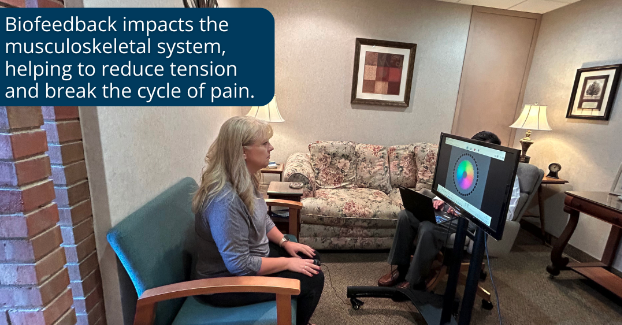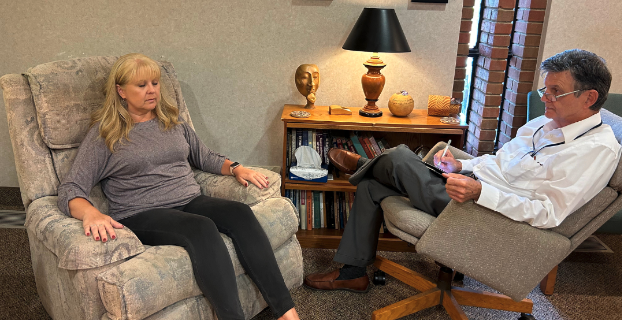Chronic pain affects millions of people worldwide, making daily activities difficult and diminishing quality of life. Dr. Gary Sipps of Western Reserve Hospital's Center for Pain Management shares insights on using hypnosis and biofeedback as effective methods to manage chronic pain. While these methods differ in both technique and use of technology, both hypnosis and biofeedback work by enhancing the individual's control over their physical responses to pain.
What is Hypnosis?
Hypnosis has a long history, dating back centuries. It is a technique that enhances a person's focus and attention, allowing them to manage pain more effectively. As Dr. Sipps explains, "Hypnosis allows individuals to direct their attention and focus as they choose, which can help in turning attention away from pain or approaching pain differently." This methodology uses the power of the mind to shift focus and alter pain perception.
Hypnosis works by deepening focus and selectively directing attention. This method can push the experience of pain to the background by focusing on something else or directly intervening with pain perception. For instance, through hypnosis, individuals might visualize soothing light or as Dr. Sipps mentions, a person can feel warmth without the presence of a heating pad by using their mind to influence their body, which can alter their perception of pain.
What is Biofeedback?
Biofeedback, on the other hand, is more technology-based and has been around for decades. It involves a structured approach using sensors connected to a computer to monitor physiological functions such as heart rate, muscle tension, and breathing. It starts with focusing on complete and fluid breathing, which helps in achieving a relaxed state. The feedback from the biofeedback system reinforces positive behaviors, helping individuals to see the impact of their actions on their body. Through this process, patients can learn to control these functions to reduce pain.
Dr. Sipps highlights the benefits of Heart Rate Variability (HRV) biofeedback, which measures heart rate and provides visual and auditory feedback to help patients manage their pain. "Biofeedback helps people to have a direct impact on their musculoskeletal system and reducing tension," says Dr. Sipps. This approach allows individuals to consciously practice breathing, relaxation, and meditative techniques, which can significantly reduce pain and stress.
Benefits of Hypnosis and Biofeedback for Chronic Pain
Both hypnosis and biofeedback offer numerous benefits for individuals dealing with chronic pain. These techniques can significantly enhance pain control, reduce muscle tension, improve mental health, and empower patients to take control of their pain management. Patients can break the cycle of pain increasing tension, which in turn increases pain. Regular practice of these methods helps individuals to manage their pain more effectively and improve their quality of life.
By learning to direct attention and focus away from pain, individuals can reduce the intensity of their pain. Dr. Sipps notes, "Hypnosis allows a person to deepen their focus and practice ways of pushing the experience of pain to the background."
Biofeedback directly impacts the musculoskeletal system, helping to reduce tension and break the cycle of pain and stress. Dr. Sipps explains, "Biofeedback is a method that a person can directly impact what the body is experiencing to a significant degree and help to reduce the experience of pain.”

Chronic pain is often accompanied by anxiety and stress, which can exacerbate the pain. Both hypnosis and biofeedback help to manage these emotional responses, creating a more positive cycle of pain management. "Pain can create and increase anxiety, which makes tension and pain worse. By intervening with anxiety, we can help deal with pain," says Dr. Sipps.
One of the most significant benefits is the sense of control that patients gain over their pain management. Instead of relying solely on external treatments like medication, patients learn that their actions can have a positive impact on their pain. Dr. Sipps emphasizes, "It's through their personal efforts that they're having an impact on pain, which is very constructive and can build a very positive cycle in how they see themselves living their lives."
Chronic Pain Conditions Responsive to Hypnosis and Biofeedback
A wide range of chronic pain conditions can benefit from these techniques, including musculoskeletal, neuropathic, and visceral pain. Dr. Sipps shares that "almost everybody has the capacity to engage in these procedures" and to benefit from them.
While all types of pain can respond to these methods, headaches are particularly challenging. However, even patients with severe headaches have reported benefits. "I've had many, many patients report that even this has helped with headaches," says Dr. Sipps.
Criteria for Suitable Candidates for Hypnosis and Biofeedback
Hypnosis and biofeedback can be effective for most people, but certain criteria can make some patients more suitable candidates.
For hypnosis, suggestibility is a key factor. Dr. Sipps explains, "About 90% of the general population is able to enter into a light level trance, which is generally all that's necessary to gain some benefit in dealing with chronic pain."
Biofeedback requires a more proactive approach. Patients must be willing to engage actively with the technology and practice the techniques regularly. "If somebody is in the early stage of dealing with pain, then I think it's necessary to do some pain management, psychotherapy, and counseling to help them to get more of a sense of empowerment, that there is something that they're able to do. They're not helpless, and they're not passive," says Dr. Sipps.
Combining Hypnosis and Biofeedback with Other Treatments
Hypnosis and biofeedback are often used alongside other treatments like medication and physical therapy. Dr. Sipps explains that these techniques are not meant to replace other treatments but to complement them. "The idea isn't that hypnosis and biofeedback would replace these things, but they can help the person get more of a sense of impact and control."

Both methods can be integrated into a comprehensive pain management plan. Dr. Sipps emphasizes, “It can be pain management psychotherapy, it can be health behavior interventions. These are all ways of looking at the whole person and engaging the biopsychosocial model for dealing with chronic pain and related conditions.” He adds, "It's the idea of being proactive and extending it from the clinic to your day-to-day life.”
Empowering Your Pain Management Journey: Take Control Today
Hypnosis and biofeedback present powerful tools for managing chronic pain, offering a path to reclaim control over your body and mind. These techniques, when integrated into a comprehensive pain management plan, can reduce pain intensity, ease muscle tension, and improve overall mental health. By actively engaging in these methods, you can break the cycle of pain and stress, leading to a more fulfilling and pain-free life.
Take the first step towards a more empowered and proactive approach to managing your chronic pain. Consider reaching out to experts like Dr. Gary Sipps at Western Reserve Hospital's Center for Pain Management to learn more about how hypnosis and biofeedback can be tailored to your unique needs. Start your journey today and unlock the potential of your mind and body to transform your pain experience.
